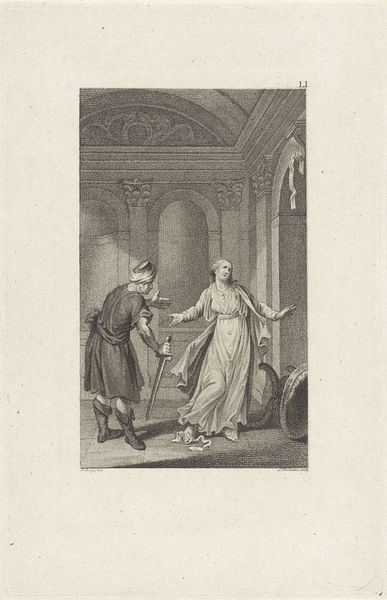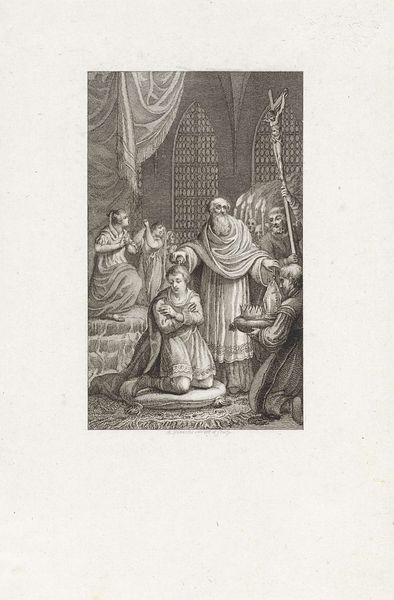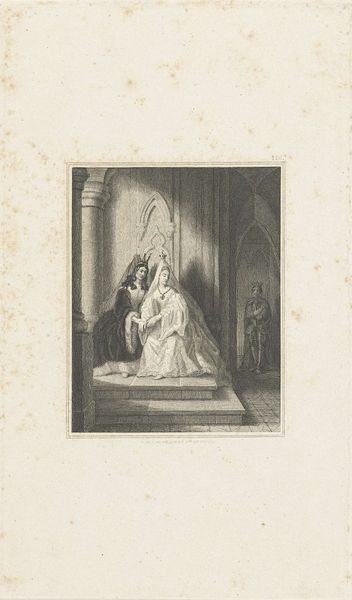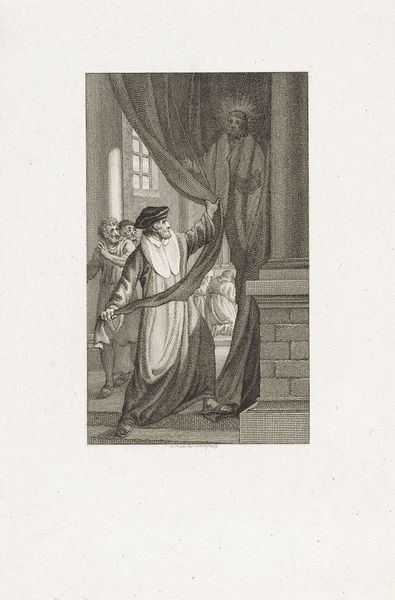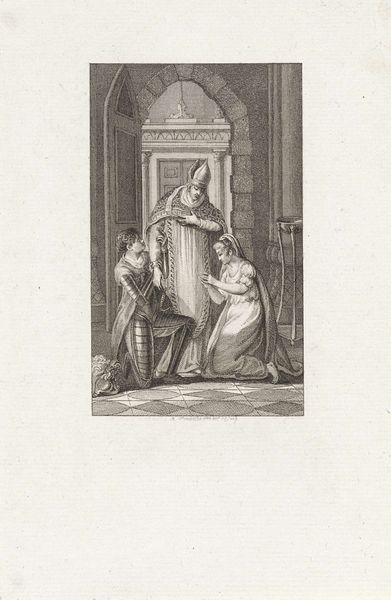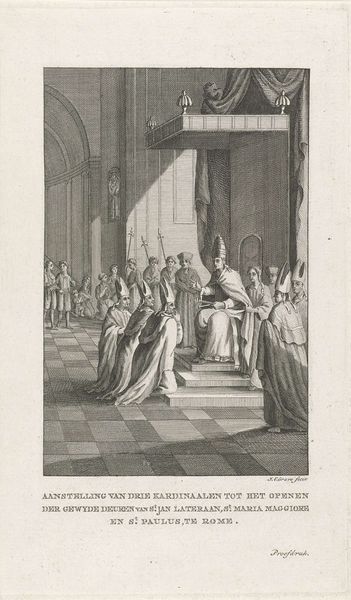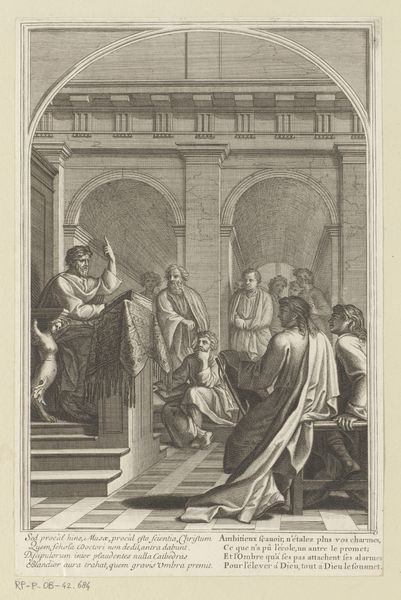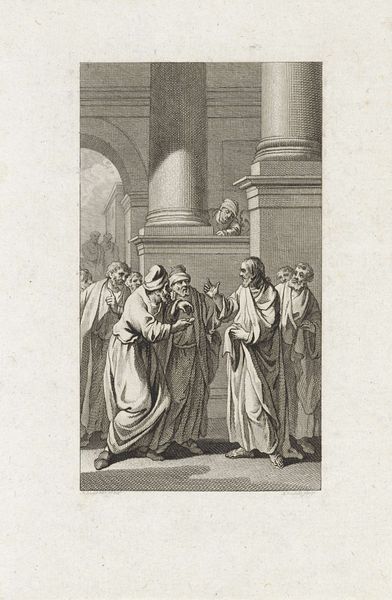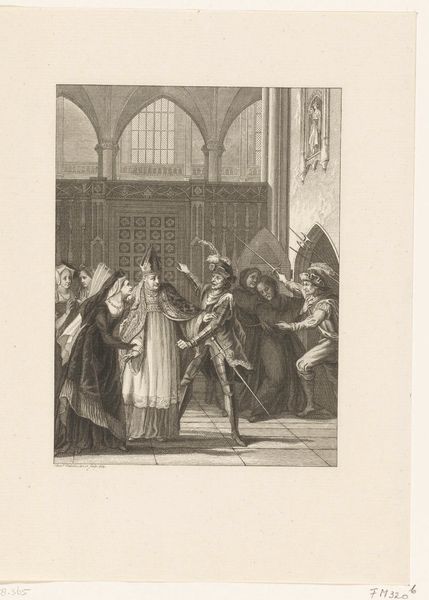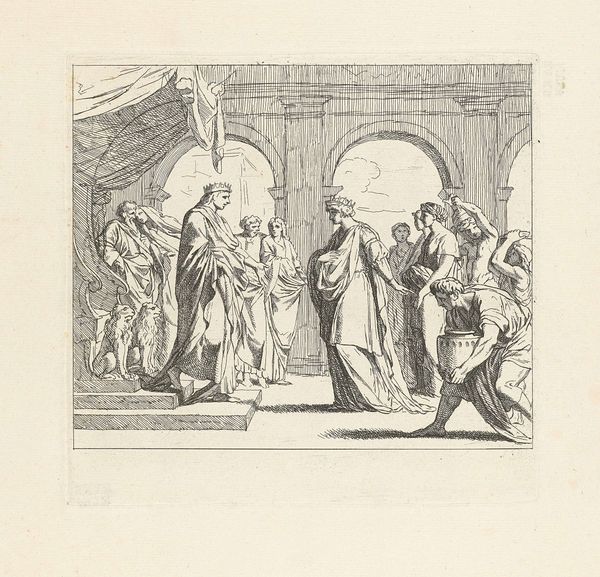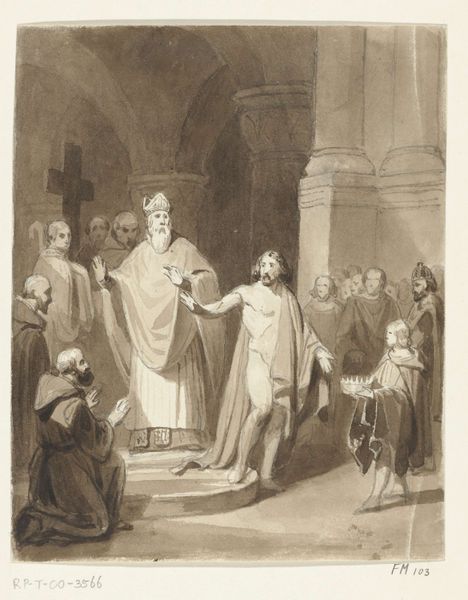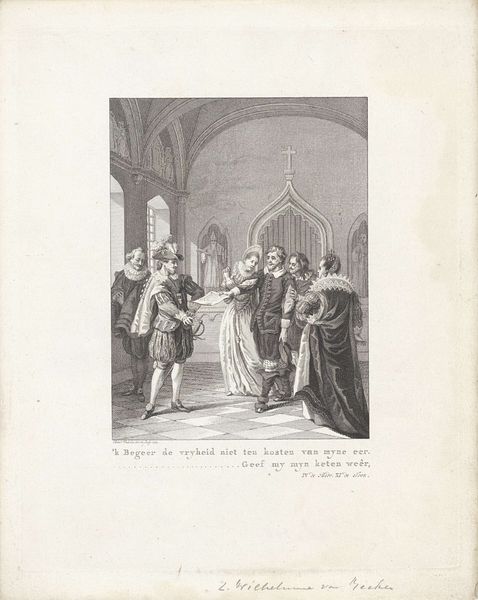
print, engraving
# print
#
romanticism
#
19th century
#
sketchbook drawing
#
history-painting
#
engraving
Dimensions: height 118 mm, width 88 mm
Copyright: Rijks Museum: Open Domain
Editor: So this is Jean-Baptiste Clément Jouvenel's "Philippine van Vlaanderen," an engraving from the 1820s. It's quite stark; the contrast really highlights the isolation of the central figure. What do you see in this piece, formally? Curator: Primarily, the composition is a study in contrasts. Notice the architectural lines, creating a strong, rigid framework. This emphasizes the implied narrative between the standing male figures and the seated woman. Observe also how light and shadow define the emotional tone: starkly divided, creating dramatic chiaroscuro. Editor: I'm intrigued by the chains binding her to the chair, and how the figure in white appears calm. How does this image fit into the Romanticism style? Curator: While appearing serene, note the restrained tension in her posture. The shackles articulate an imposed confinement – the epitome of Romanticism's focus on individual emotional and psychological states. The formal qualities emphasize an internal struggle, the contrast highlighting a subject of interiority. It eschews overt theatricality for quiet strength. Editor: That makes perfect sense! I hadn't considered how the limited palette emphasizes internal feelings rather than external action. Thank you. Curator: Precisely. A keen eye reveals an intriguing dance between form and the Romantic spirit, does it not? The use of geometric shapes in juxtaposition to the flowing robe of the queen helps solidify our appreciation.
Comments
No comments
Be the first to comment and join the conversation on the ultimate creative platform.
